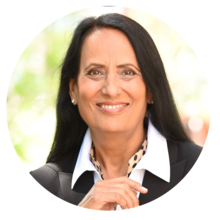About this Presentation
Today’s volatile, uncertain, complex and ambiguous supply chain and operations environments require stabilizing, agile and resilient operating models. A Demand Driven Operating Model (DDOM) is a supply order generation, operational scheduling and execution model using actual demand in combination with strategic decoupling and control points and stock, time and capacity buffers in order to create such a stable, reliable and agile system in the operational relevant time horizon. A DDOM is designed around four basic elements: (1) It paces to actual demand. (2) Strategic decoupling points absorb variability. (3) Operational control points are used for scheduling, gating and resource and order synchronization as required. (4) Dynamic stock, time, and capacity buffers protect the decoupling and control points. The DDOM is designed specifically for today’s environment. It provides clear operational priorities to ensure high customer service, controlled inventory levels and short lead times even under adverse conditions. Within the DDOM, Demand Driven Material Requirements Planning (DDMRP) generates replenishment orders (work orders, purchase orders or stock transfer orders) for the stock buffers at the strategic decoupling points on the basis of actual demand and the buffer configuration. Detailed resource scheduling is driven around and through the operational control points. Pace setting control point resources (drums) are scheduled finitely, using the order request dates generated by DDMRP. Demand Driven Execution (Buffer Management) actively manages stock, time, and capacity buffers in relation to all open and released orders and scheduled activity. Time buffers protect the control point schedules. Capacity buffers define non control point resources’ ability to absorb execution variability or support additional flow. On a continuous basis, alerts are provided as signals to DDMRP and order progress to Demand Driven Scheduling to enable early and proactive intervention as necessary to protect the flow. Adaptation describes the closed-loop feedback and the analysis of past and projected future model performance, feeding into DDS&OP and resulting in a reconfiguration of the DDOM. The model configuration or Master Settings replace the conventional notion of the Master Production Schedule. The presentation explains the underlying concepts and how a DDOM operates by discussing its components and interactions and illustrates its functioning through the case of a machining component manufacturer.
What Will You Learn
To help you get the most value from this session, we’ve highlighted a few key points. These takeaways capture the main ideas and practical insights from the presentation, making it easier for you to review, reflect, and apply what you’ve learned.

The demand driven operating model allows for continuous adaptation to challenges from the environment.
Buffers are the only mechanism that can absorb variability and stabilize a system that is subject to variability.
The model uses actual demand as a guiding signal, not forecasts.
Instructor(s)
Christoph Lenhartz
Christoph Lenhartz, MBA, Jonah, TOCICO-certified, Certified Consultant (bdvb), DDPP, DDLP, DDOP, SCOR-P, CSCP, CTSC, CSCA is a TOCICO board ember and past and current Chair of TOCICO. In over 20 years he has acquired a wide-ranging, international experience in industry, as a successful entrepreneur and also a leader of management consulting teams in high complexity TOC implementations. He has lead strategic, business transformation, supply chain management and IT projects and his expertise also includes post-merger integration of supply chain operations for major international groups. One of the leading experts in Europe in TOC and Demand Driven methodologies he is the General Manager of Catena Strategies, a TOC-based consultancy in management and operational excellence. He also serves as Master Instructor for the Demand Driven Institute. He has published articles on TOC, Demand Driven and other management topics in journals such as “Quality Progress” or the prestigious French "Techniques de l'ingénieur" and has translated and written books on TOC and management topics in German. He is an appreciated speaker and teacher of TOC and related topics. Christoph holds an MBA from Clemson University (USA), he graduated from the University Essen (Germany) as a Diplom-Kaufmann and has pursued post-graduate studies at Washington State University (USA).

Ms Alka Wadhwa
Alka Wadhwa is an experienced consultant and process improvement expert with over 24 years of expertise in the Theory of Constraints (TOC), Lean Six Sigma, and organizational performance optimization. She has successfully led projects in healthcare, financial services, and manufacturing, driving significant improvements such as a 67% boost in hospital operations and a 140% increase in outpatient visits.
Previously, Alka Wadhwa spent 17+ years at GE Global Research Center, where she led initiatives to enhance various GE businesses through advanced technologies, process redesign, and system optimization. Founder of Better Solutions Consulting, LLC, she specializes in using TOC, Six Sigma, and data analytics to streamline operations and build high-performance teams.
Her work has earned her multiple accolades, including the Empire State Award of Excellence in healthcare.

Dr Gary Wadhwa
Dr. Gary Wadhwa is a Board Certified Oral & Maxillofacial Surgeon with extensive experience in the field. He completed his Oral & Maxillofacial Surgery training at Montefiore Hospital, Albert Einstein College of Medicine in Bronx, NY, and has served as an Attending at prestigious institutions like St. Peters Hospitals, Ellis Hospital, and Beth Israel Hospital in NY. With a career spanning over two decades, he was the former CEO and President of a group specialty practice in NY from 1994 to 2015. Dr. Wadhwa holds an MBA from UT at Knoxville, TN, and has undergone additional training in System Dynamics at MIT, Health System Management at Harvard Business School, and Entrepreneurship and healthcare innovations at Columbia Business School. Committed to expanding access to Oral & Maxillofacial Surgery care, he is currently engaged in a meaningful project to provide healthcare services to underserved populations in inner city and rural areas through non-profit Community Health Centers.
